DCRDATA - Comparing on-chain Data

Block explorers offer a wealth of information, and DCRDATA is leaps and bounds above even the most popular explorers. There is still more to cover and in real terms we’ve only just scratched the surface, but this is a good point in our journey to say, comparing data is vital to understanding.
Scratched the Surface of On-chain Data
For this reason, we’re going to take a look at two popular block explorers and the information on offer for other chains. For my investigations, I find it useful to see how Decred is performing against other blockchains. The most obvious, to compare to, is Bitcoin, but it’s also worth remembering the security mechanisms are quite different at this stage of their life cycles. For my initial investigation, into any new project, the information I’m most interested in includes:
- Coin supply and coin circulation
- Blockchain size
- Hash rate
- Transactions and block size
In terms of popular block explorers, there are quite a few, plus most projects roll their own. But in the past, I’ve found Blockchain.com and Blockchair.com to be very useful. And if you’re interested in the Ethereum network, you might also find EtherScan useful.
Let’s start be looking at Bitcoin’s data on Blockchain.com’s explorer. First up, hit the explorer link, and you’ll be presented with a barrage of information, most of which is price related. As useful as this might be it's worth remembering most price data doesn’t come from on-chain transactions, this information is confined to centralised exchanges and are never recorded on-chain. For all intense and purpose, if it isn’t recorded on-chain, it didn’t happen.
Blocks and Transactions
In the next section, we can see the latest transactions and latest blocks. The latest transactions section is the mempool, and each transaction added is getting prepared to go into the next or future block. Depending on its position in the pool, which is determined by the fee the transaction is willing to pay. The latest block section is quite interesting, notice how the third block down, Block 741,952, has a size of 150% full. Meaning the size exceeds the maximum Bitcoin block size of 1 MB. This is possible due to the segwit soft fork that tricks older nodes into accepting blocks that are bigger than the maximum block size consensus rule. Ultimately, this means that older nodes are no longer validating the transactions in a block. Instead, unknowingly, passing this responsibility and trust to newer nodes.
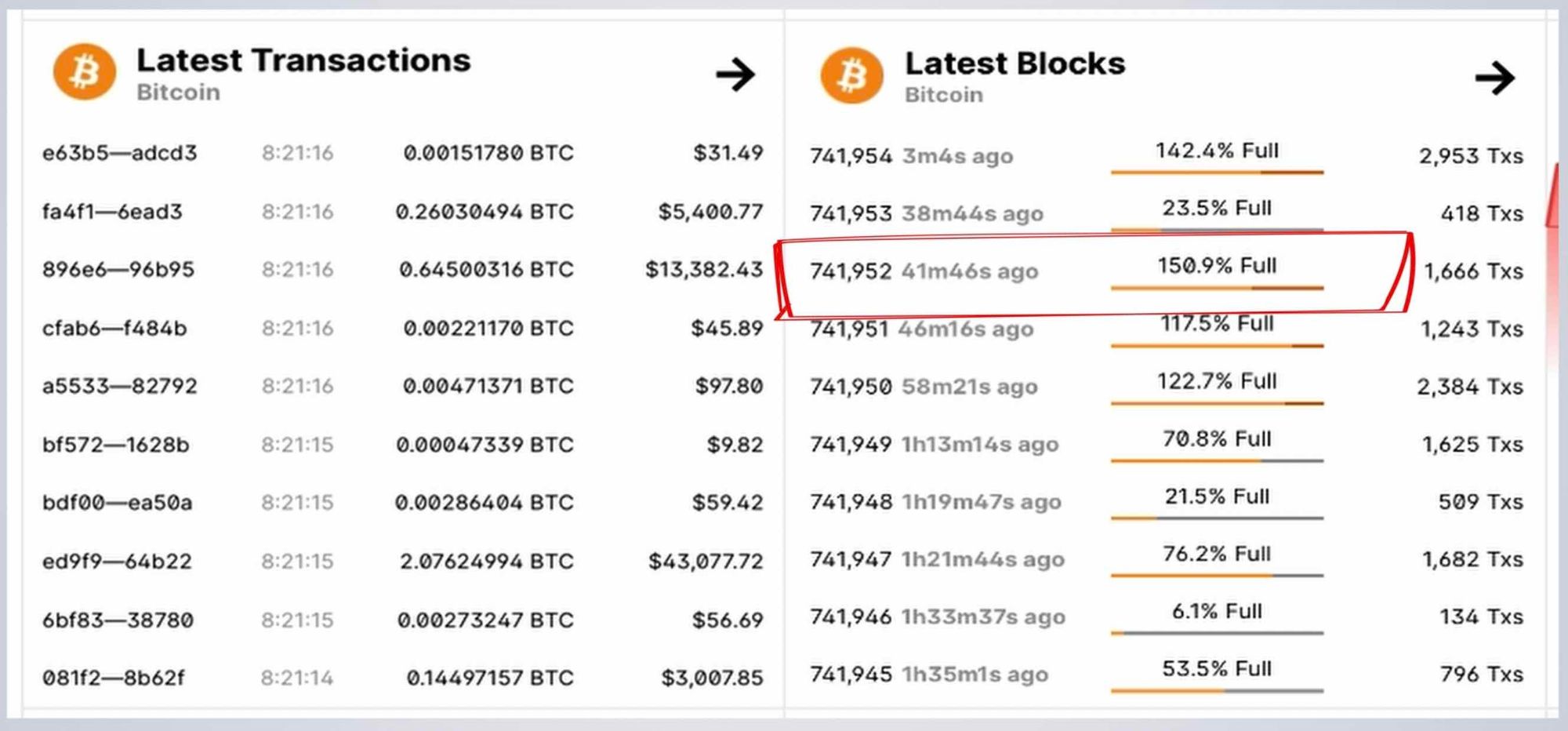
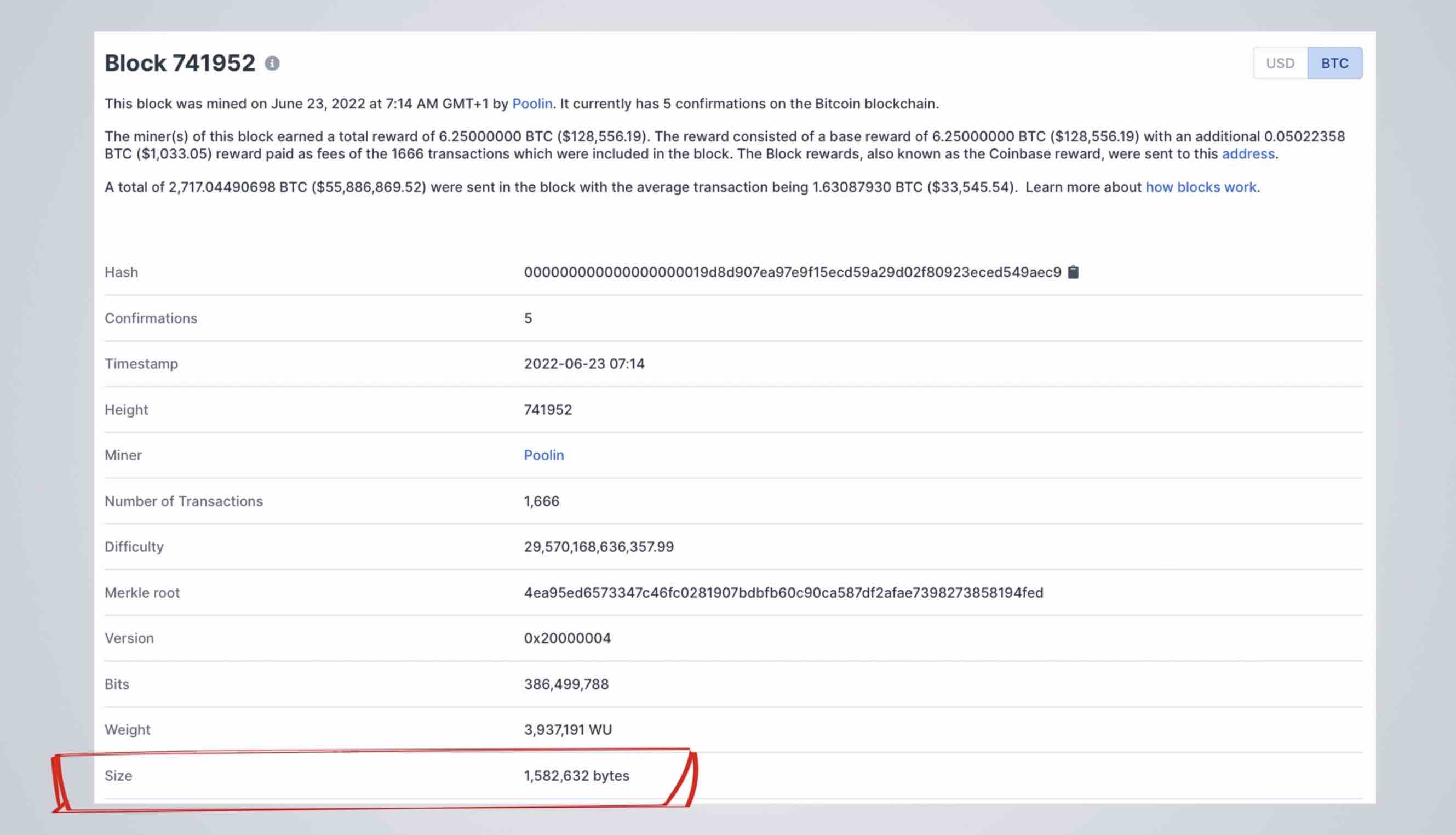
Blockchain Size
We can get a lot more Bitcoin Data by clicking on the hash rate link. It’s worth noting that these charts and extra information are only available for the Bitcoin chain, if you want additional information on other charts this is where blockchair.com helps. One thing I like about Blockchain.com’s charts are the explanations given underneath, for someone new to the data this can be really useful.
Next, if you click on the section header, it opens up all the available charts. By clicking on a chart, it will send you back to the previous page with that section open. For instance, let’s click on the Block Details link and then the Blockchain size chart. Here we can see how the Bitcoin blockchain has grown over the years to a current size of 412 GB. When you compare this with Decred’s block size of less than 9 GB, you start to realise how manageable Decred’s blockchain currently is.
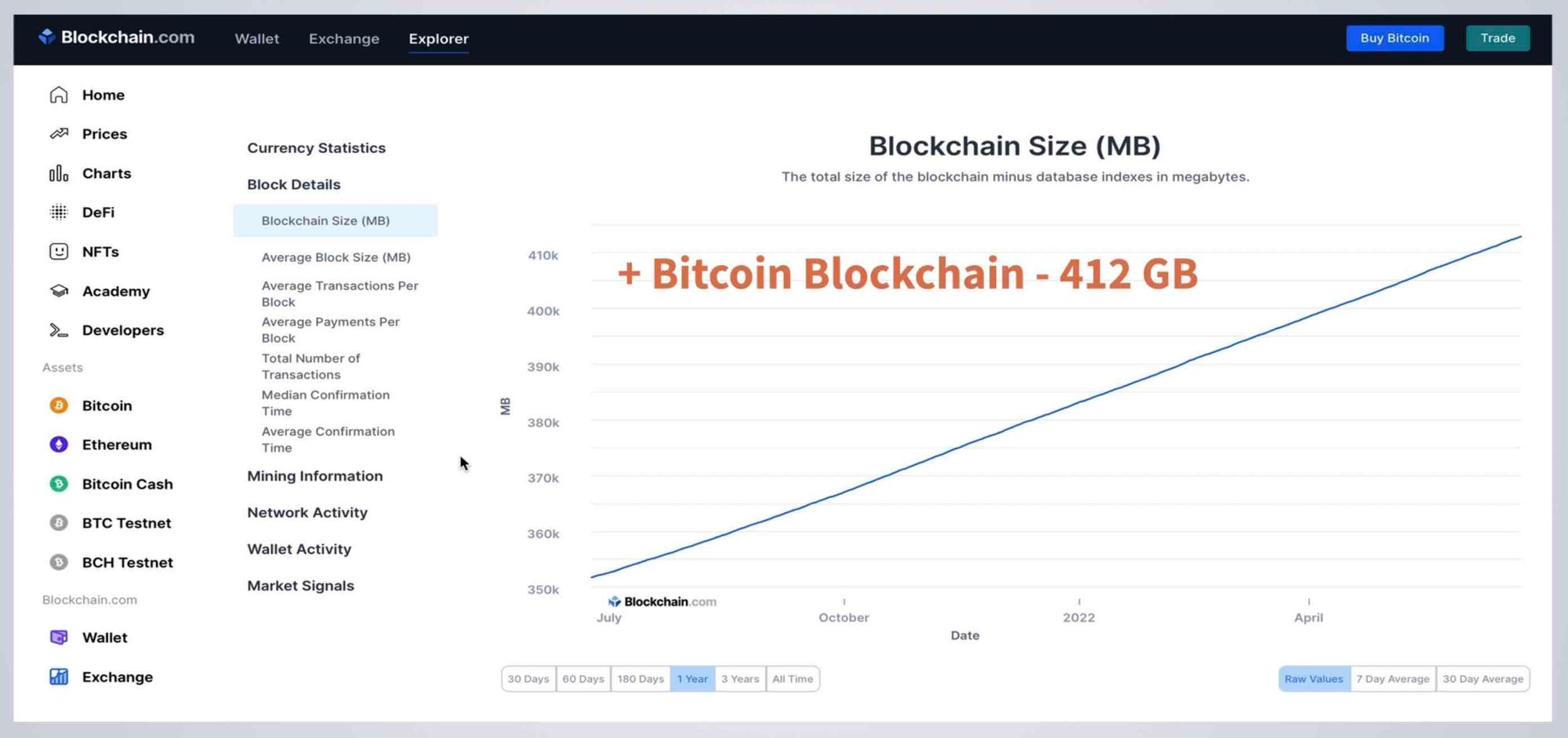
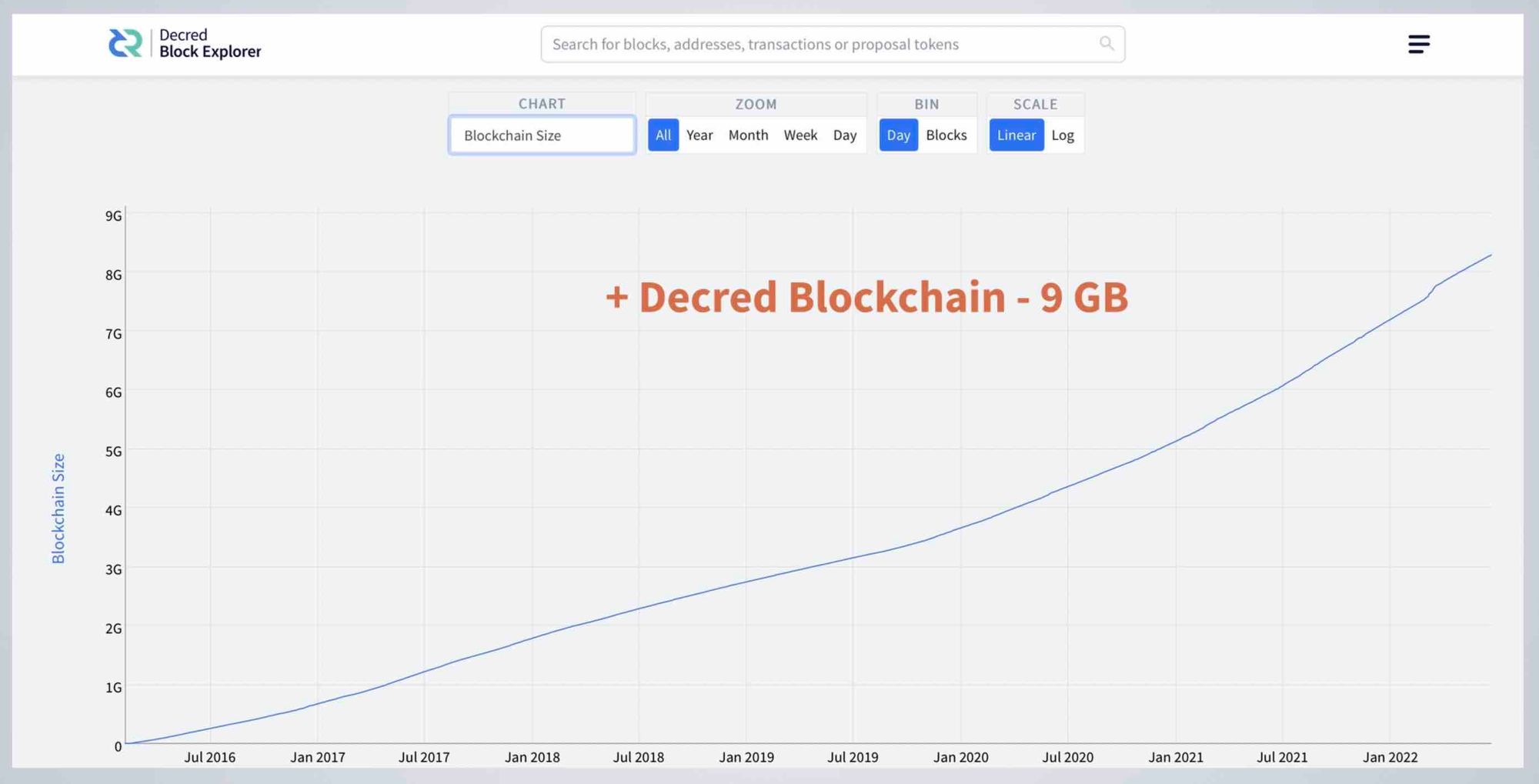
Average Block Size
The next chart, in this list, is the average block size and once again shows that the maximum size of a Bitcoin block has indeed changed. Reportedly, a maximum block can now be 4 MB or 400% full. This chart also shows, that this has been the case since October 2017. In Decred’s case, exceeding the maximum block size rule is not permitted. And because all nodes are running the same software, the block would be rejected. This evidence can also be found in DCRDATA’s Block Size chart.
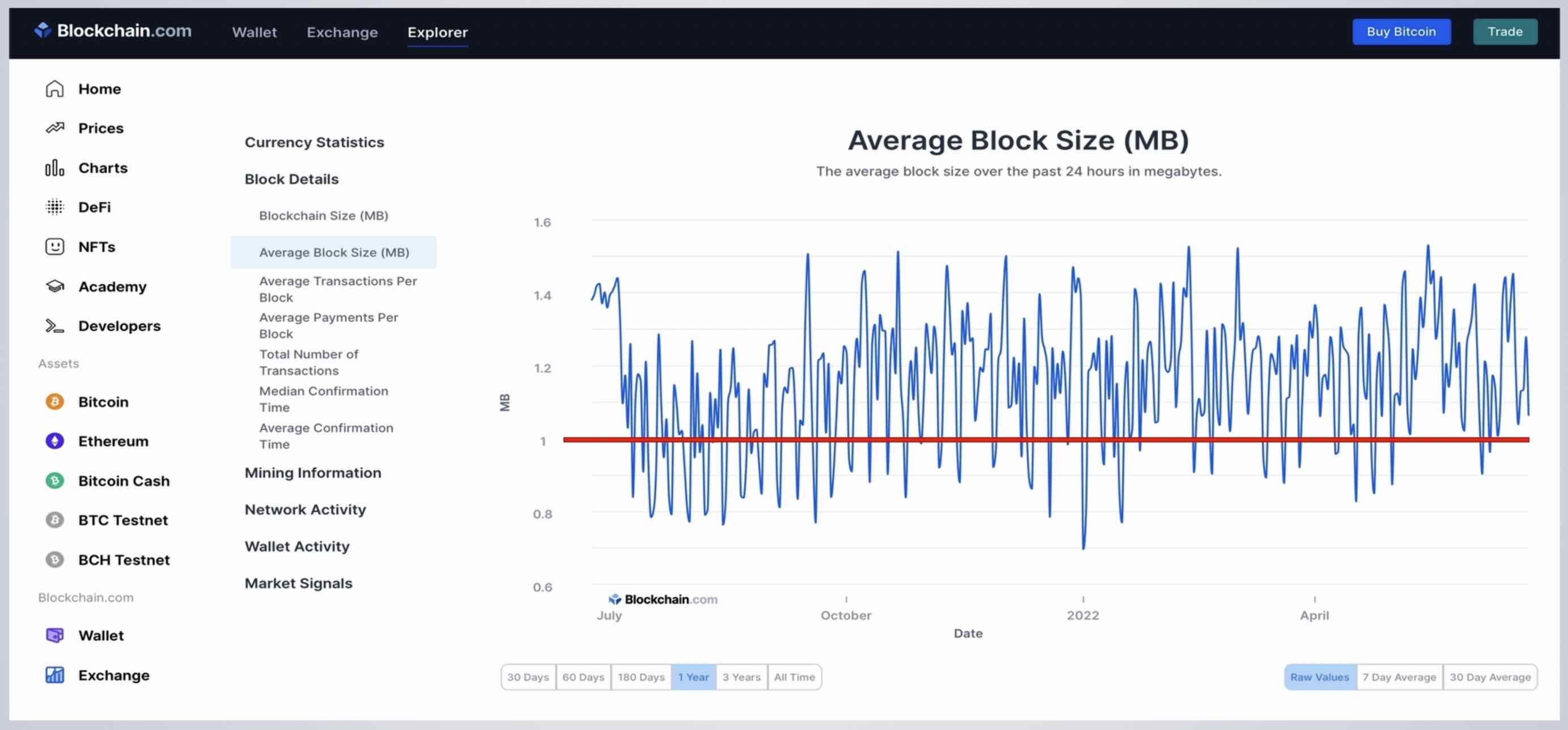
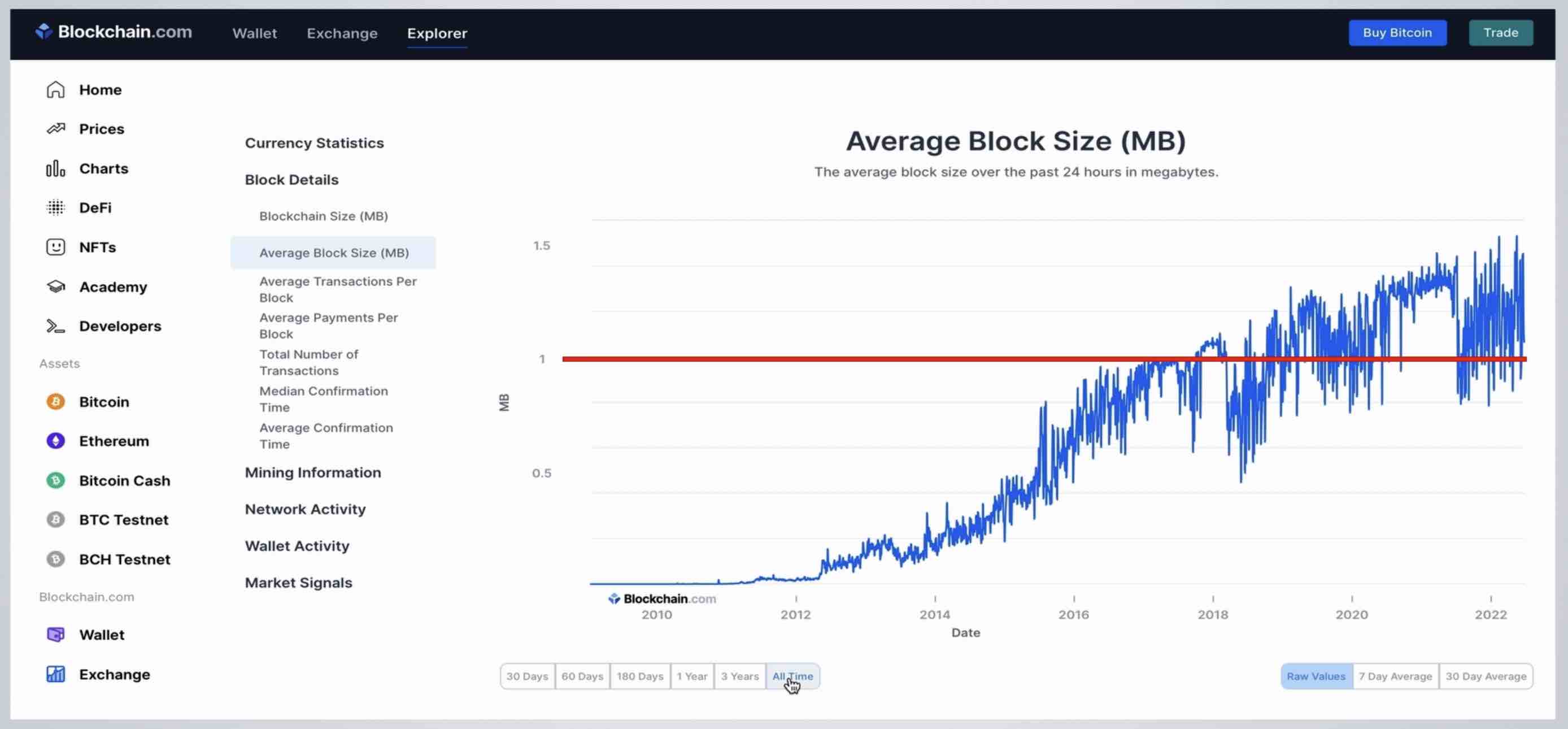
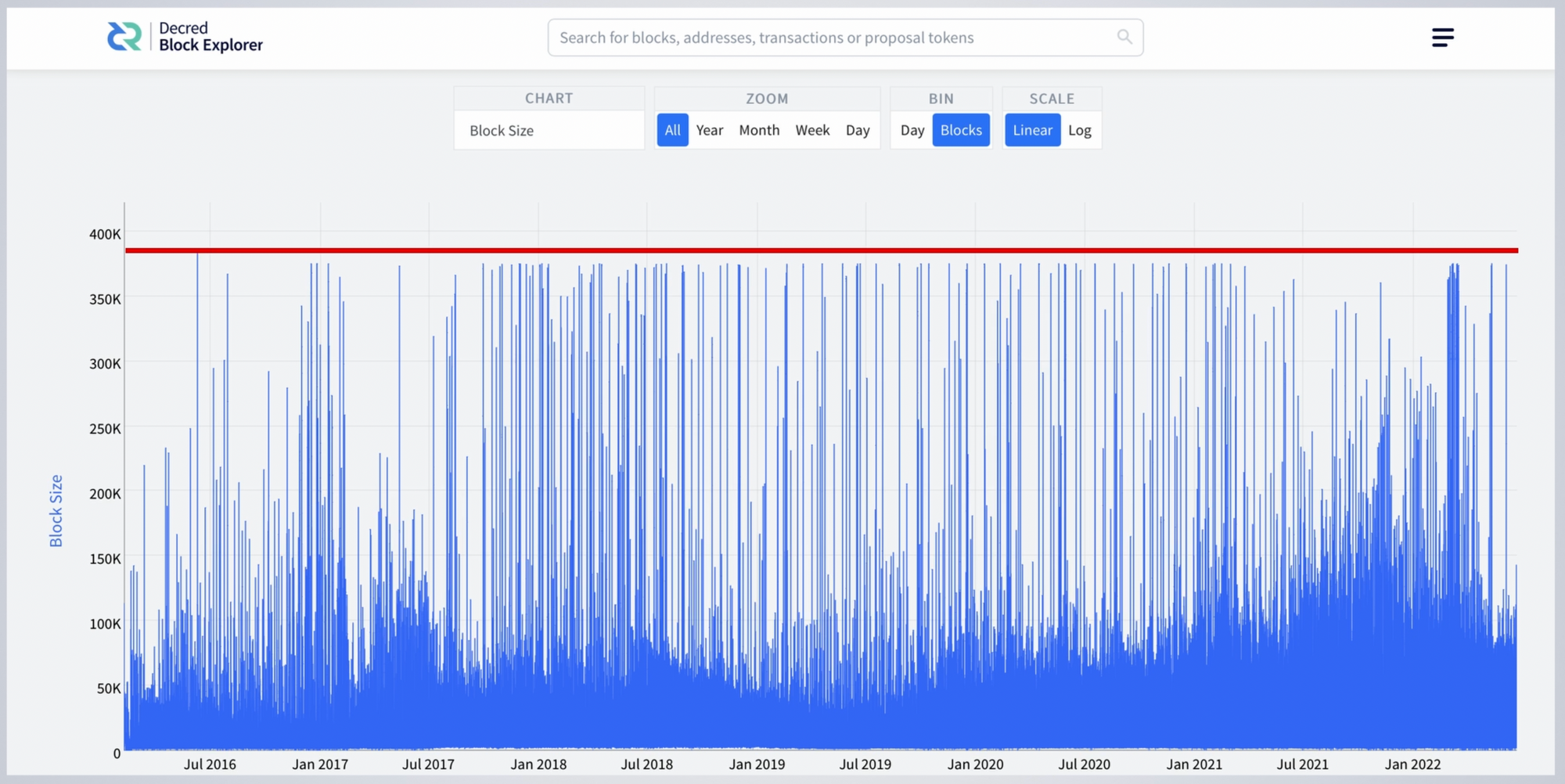
In the network activities section, there are some useful charts that look at how the chain is used. One in particular, I like to look at, is the “Mempool size in Bytes”. This chart shows congestion on the chain and when compared with the “Mining Information — fees” chart, it gives an excellent indicator for how well the chain coped with the inflows of traffic.
Hash Rate Distribution
Next up, let’s have a look at the information available on the blockchair.com explorer. Once again, click on the explorer button, and this time we’ll choose the Bitcoin Cash chain. Firstly, we see a Bunch of promotional material, which can be distracting, followed by the main information. In this view, we have all the information we’re initially looking for – Blockchain size, hash rate and transactions. And if we click on any of these, we get additional information. One of the charts, on both explorers, I find interesting is the hash rate distribution pie chart. Which in the case of Bitcoin Cash suggest a vast amount of the hash rate is controlled by a single mining pool, not a good signal for decentralisation. A similar pie chart for Decred can be found at https://dcrstats.com/pow.


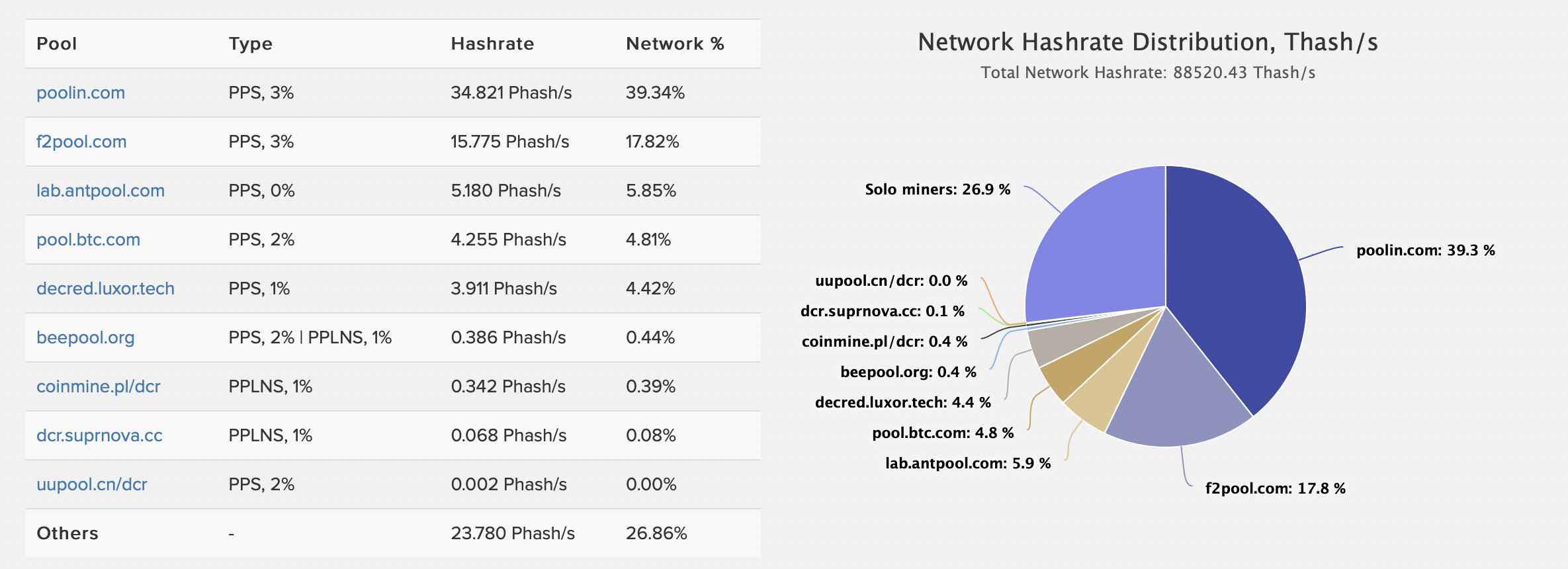
Do Your Research
The level of depth you can go to when doing your research is extensive, and I can’t express deeply enough the importance of looking at on-chain data before you make an investment decision. Understanding how to interpret the information will also give you a massive edge and hopefully reduce the chances of getting pulled into projects that have no true value, participation, or use case. Two things you should also keep in mind:
- What does the information tell you about the projects' decentralisation?
- And is the project showing natural growth and participation, based on real use cases?
Once you understand the data, I would also recommend, trying to use the project for its intended purpose. In Decred’s case, try mixing your coins; staking your coins; trading on DCRDEX, or simply transact between two wallets.
All too often, projects in this space produce huge amounts of hype but when it comes to use, they fall short of their desired goals. For instance, the project either doesn’t work or the user experience is poor or buggy; is too expensive to transact with or some other barrier to entry; and my favourite, the project will achieve its goal sometime in the future.


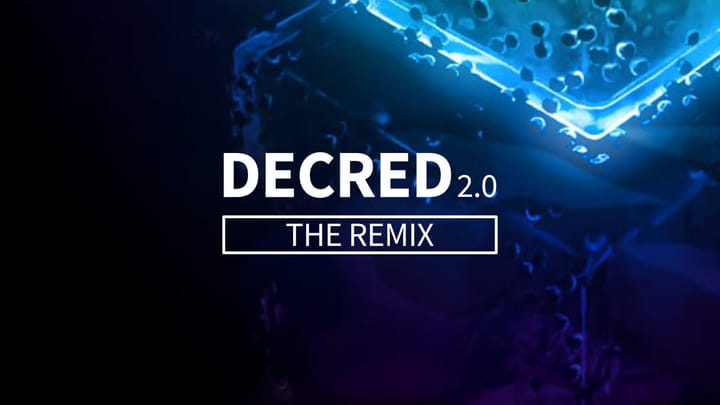

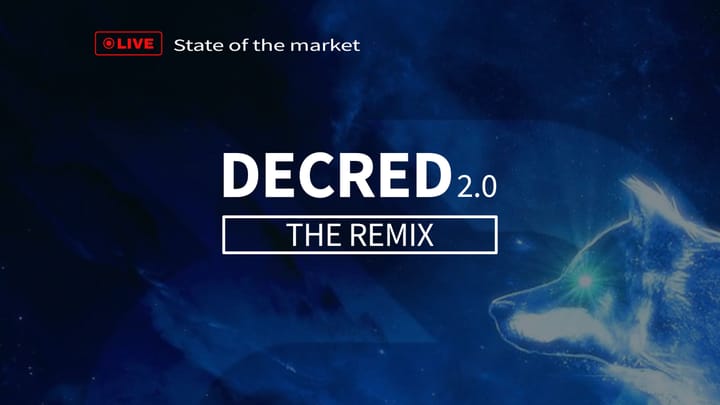
Comments ()